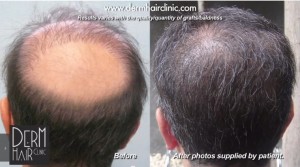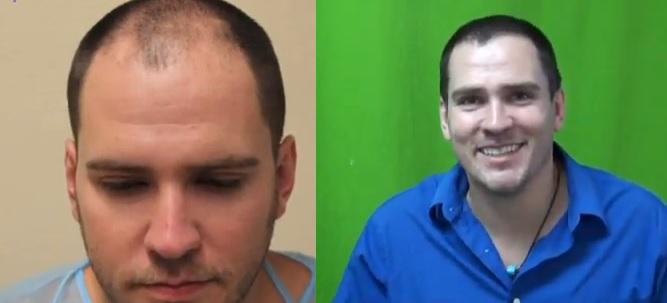The main applications of the Acell product have primarily been in the realm of wound healing for the surgical treatment of wounds and burns. It is also used gynecology, reconstructive procedures and veterinary medicine.
Acell Therapy Does Not Improve Hair Surgery Growth
Hair loss sufferers may have read about using Acell on “plucked hair duplication”. This is where a hair shaft (and its bulb) is removed from the follicle. Since the bulb still contains DNA, this supposedly can be used to create an entirely new form of hair growth when the plucked shaft is inserted into the scalp, along with Acell.
Acell is also being promoted for as a way to help improve yield. When the donor follicles are placed into the recipient area slits, a liquid suspensions of the product is also injected. According to one of the developers of Acell, this method increases hair counts by a rate of 50-400% where four follicles are generated for every one that is inserted.
Doctors have not been able to reproduce the type of results that its proponents have claimed.
Watch this video from Dr U cautioning against this sales pitch:
Scientific Studies on Hair Cloning
Those who are interested in the idea of reproducing hair follicles may want to read about actual research which has been published in scientific journals. Two notable examples includes:
– Dr. Angelia Christiano at Columbia University
– Takashi Tsuji at the Tokyo University of Science.
These studies have been investigating the inductive properties of derma papilla cells (at the base of the hair follicle) to communicate with epidermal stem cells and cause them to differentiate into new hair follicles.
Research efforts in these directions have a long way to go before hair cloning can actually be offered to patients as formal procedures for hair restoration.
Acell Therapy Does Not Improve Hair Surgery Growth : Research Studies on Acell
So far, the research publications for Acell have covered experimental explanations on how the product works in general as well as various applications in medicine. Topics include:
- Strength of the porcine scaffold
- How the extra cellular matrix powder is prepared
- Repair damaged heart structure tissue
- Repair of esophagus tissue in dogs
- Reconstruction of joint tissue
Among numerous other topics, on the site, none specify a focus on the restoration of hair or any type of applications on follicular tissue.
An effective treatment would need to demonstrate results that can be replicated. This is an important issue for consumers to be aware of.
Quality Yield After A Hair Transplant Surgery
The optimization of hair yield in hair restoration depends on the skill and experience level of the surgeon, not a product. This can be assessed by viewing high quality before and after visual images and videos of real images at various angles. Click here to learn more

Platelet Rich Plasma – PRP is NOT a legitimate hair restoration treatment

